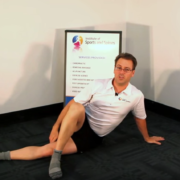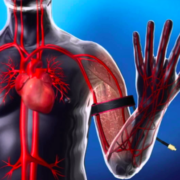SPOTLIGHT: 2/5 Medical communication for effective recovery.
Communication and Athlete management
By Don Williams
Institute of Sports and Spines, Carina, Brisbane.
B.Sc., M.Chiro., ICSSD., PG Dip. NMS Rehabilitation Cert DNS. Memb: FICS, CEA
Reaching peak performance in the sporting arena can be long and hard road. Staying at the peak can be even harder. When all the aspects of an athlete’s health and fitness are considered a lot goes into preparing an athlete for a season and particularly for targeting specific events for optimal performance. This issue is further complicated by injuries and the management and reintegration of training to ensure that the injury is addressed and the athlete returns to peak performance without the injury reoccurring or another related injury starting.
A major challenge for management of injury:
What I see as one of the major challenges when managing an athlete with an injury is ensuring that communication is adequate between all the parties involved in the management of the athlete with the complaint.
Modern athletes usually have a team of people around them. Coach, Strength Coach, Doctor, Physio, Massage Therapist, Surgeon, Sports Psyche and a host of others depending upon athlete needs. It is incredibly common to find conflicting advice and opinion amongst the team and within vast list of reasons it nearly almost always boils down to a lack of communication.

I once heard a fantastic quote by Ricky Gervais where he pointed out that, “A camel is a horse designed by a committee”
It can often be the case that the larger the team grows the harder it becomes to make decisions.
A scenario we can relate to:
So let’s imagine a scenario where Michelle, a hurdler, injures her knee. She has been training with her coach at the local track and gets regular massage with a great therapist. She does one strength and conditioning session per week at the performance gym, had her diet monitored with a dietician/nutritionist on a monthly basis and otherwise only seeks care with other professions when she needs.
After the injury she ends up seeing Jakob at Institute of Sports and Spines who diagnoses her with a significant tear of the meniscus and refers Michelle off for an MRI to confirm his suspicions. The scan confirms the major tear and Michelle will require a surgical approach to resolve the situation. Jakob, the person who diagnosed and initiated the process or intervention then refers Michelle to a surgeon who he trust and work closely with for management and also writes a letter to the GP. As many of you know, currently in our healthcare “hierarchy” in Australia, a GP referral is required for the specialist visit and surgery to be covered under medicare.

Unfortunately this GP thinks that all Chiropractors are idiots and as a result, refers the patient to another surgeon. This surgeon is unaware of the other links in the chain in regards to where the complaint was first assessed and diagnosed and does not communicate with Jakob about the surgery and what was actually done in the operation. Once the surgery is complete there is conflicting advice from the GP about what should be done and Michelle doesn’t end up doing effective post-operative rehabilitation and ends up re-injuring the knee as a result of the breakdown in communication.
The above scenario is an unfortunate but common incident that we see in practice so often in our clinical practice.
At the nuts and bolts level, the breakdown in communication is to blame and if all parties involved were to step back and really have a focus on what is the best way to manage the athlete/patient to get the best possible outcome then this sort of situation would arise much less frequently.
The Ideal Situation:
In an “optimal scenario”, the surgeon sends a post-operative letter and synopsis which guides an effective rehabilitation program so that Jakob can develop and implement a rehabilitation plan for Michelle to progress through the early clinical phase or rehabilitation and back into functional training and gym work. It is important to note that at times, a simple surgical intervention may be planned but once the surgeon commences the operation, the injury turns out to be far worse than anticipated or the approach may be different which can at times vastly change the required rehabilitation program. In Michelle’s case, a simple debridement of a meniscus would see a relatively simple recovery and rehabilitation plan, however, if there was stitching and repair of the torn meniscus, the rehabilitation would be slower and more complex.
In reality, effective communication would see Jakob project the requirements of his rehabilitation program to the athlete, as well as the coach and strength and conditioning coach. This would ensure that their goals are aligned and that what Jakob is trying to achieve in his management is not going to negatively impact on what the coach and athlete are trying to achieve. Furthermore if the coach is struggling with some aspect of technique, this issue could be discussed with the rehabilitation team, who may be able to assess the movement patterns, identify some deficiencies and actively work in unison with the coach to improve the deficiencies which may then enhance the performance of the aspect and additionally prevent injury from overload.
The sport and healthcare landscape is rife with egos and opinions and often this ends up with the athlete’s goals and outcome taking a backseat.
Better practices and a better informed management team.
In the example given above, if solid communication was at the forefront, then the GP and surgeon would communicate back to Jakob what was done in the surgery and indicate any specific requests or advice given to ensure that early rehab was effective and targeted at arriving at the best outcome. This would then allow Jakob to give targeted feedback to the trainer and other therapists involved to ensure that everyone was on the same page to achieve a great outcome for Michelle.
It is important to note that the breakdown in communication is not always any particular party. I have chosen one aspect here, with a GP breaking the chain to highlight where co-referrals can compound issues. Our team at Institute of Sports and Spines have a great network of GPs, surgeons, radiologists, trainers and other therapists who we deal with regularly and have a tremendous amount of respect for. We certainly appreciate the communication and mutual respect we have and which we believe is one of the cornerstones of good patient outcomes.
The major plus of living in a big city is the ability to have a network of professionals with a range of specialisations, special interests and expertise available at hand to be able to better manage our athletes. When all the parties involved recognise their strengths and weaknesses and utilise the available pool of resources our management and outcomes for athletes are greatly enhanced.
You can view some of Don’s and the team at Institute of Sports and Spines videos on their youtube channel:












